 Board staff, Zachary Ramsey and Joshua Kaup, were activated by the Department of Water Resources’ (DWR) Department Operations Center on January 28, 2025 to help provide watershed protection measures after the devastating Palisades and Eaton fires in the Los Angeles region. They assessed sites and directed teams of California Conservation Corps workers installing Best Management Practices to prevent contaminants in surface water from reaching local waterways. Together, their efforts helped protect watersheds surrounding 13,745 parcels from post-fire contaminant runoff. This was a monumental undertaking, and their work was a big part of its success. This was a joint collaborative effort executed by DWR, the Central Valley Flood Protection Board, and Caltrans.
Board staff, Zachary Ramsey and Joshua Kaup, were activated by the Department of Water Resources’ (DWR) Department Operations Center on January 28, 2025 to help provide watershed protection measures after the devastating Palisades and Eaton fires in the Los Angeles region. They assessed sites and directed teams of California Conservation Corps workers installing Best Management Practices to prevent contaminants in surface water from reaching local waterways. Together, their efforts helped protect watersheds surrounding 13,745 parcels from post-fire contaminant runoff. This was a monumental undertaking, and their work was a big part of its success. This was a joint collaborative effort executed by DWR, the Central Valley Flood Protection Board, and Caltrans.
Image taken from DWR’s Public Affairs Office
 From Maven’s Notebook,
From Maven’s Notebook,
From the Department of Water Resources:
Today, the Department of Water Resources (DWR) announced that recent storms have allowed for another increase to the State Water Project (SWP) allocation forecast for 2025. The allocation has increased to 35 percent of requested water supplies, up from 20 percent in January based on increases in precipitation, snowpack, and reservoir storage. The SWP provides water to 29 public water agencies that serve 27 million Californians and 750,000 acres of farmland across the state. The latest allocation forecast takes into account precipitation and snowpack conditions up to February 10, prior to a cold storm that brought welcome snow to the Sierra. That snowpack will be included in future water supply calculations along with any forecasted dry conditions ahead. (more)
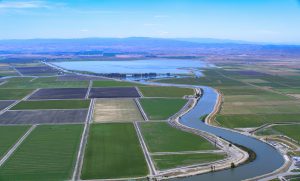
From Maven’s Notebook,
From the Department of Water Resources,
The Department of Water Resources (DWR) has issued a Notice of Validation Action for Delta Conveyance Program bond financing. This provides an official notification of the “validation action” DWR filed with the Sacramento County Superior Court in January regarding DWR’s authority to, among other things, issue revenue bonds to finance the planning, design, construction and other capital costs of Delta conveyance facilities, such as the Delta Conveyance Project DWR approved in December 2023. (more)
 From Comstock’s Magazine,
From Comstock’s Magazine,
2022 was wrapping up as a very dry year, which is saying something considering all the drought years that preceded it. From April through November, Sacramento received less than 2 inches of rain. Then, the day after Christmas, it started to rain … and rain … and rain … nearly every day for almost four weeks. Sacramento received more than 9 inches of rain in that time, more than half its annual average in less than a month. Sierra snowmelt added to the mess. The Sacramento and American rivers bulged, and the Cosumnes River flooded, causing property damage in southern Sacramento County. The scene repeated itself across the state, including south of Fresno, where the long-dormant and once-massive Tulare Lake was brought back to life. Officials declared a state of emergency, and millions of dollars in damage claims were paid. (more)
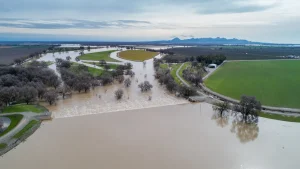
From Maven’s Notebook,
By Natalie Donback, Grist
This story was originally published by Grist.
As climate change drives ever more frequent and intense extreme weather, the need for faster, more precise predictions will only grow. Heavy rain and floods wreaked havoc this year, killing hundreds and displacing countless more in the United States, Spain, central Europe, and a great swath of Africa, where over 7.2 million people have been affected. An estimated 267 people died in Kenya alone and another 278,000 were displaced as floods impacted 42 of the nation’s 47 counties last year. With torrential storms projected to intensify by 7 percent for each 1.8 degree Fahrenheit of warming, predicting precisely when and where such events will happen is key to saving lives and livelihoods. (more)
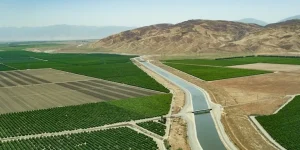 From Maven’s Notebook,
From Maven’s Notebook,
By the Department of Water Resources:
What is a State Water Project allocation?
The State Water Project (SWP) is a system of reservoirs, canals, and pumping plants that was built by the California Department of Water Resources (DWR) in the 1960s to provide water supply, flood control, wildlife habitat, and recreation. Water supplies from the SWP were always intended to fluctuate with California precipitation, which naturally swings between flood and drought. The SWP delivers water to 29 public water agencies based on long-term water supply contracts. Each year, starting in December, DWR announces to those water agencies – called SWP contractors – approximately how much water the project is likely to be capable of delivering in the coming year. Once a month for several more months, DWR assesses the water supply for “allocation” and may update the allocation if conditions warrant. The allocation is expressed as a percentage of the 29 public water agencies’ maximum water supply contract, such as 15 percent or 75 percent. DWR announces the final allocation in May or June, then make deliveries to contractors based on the final allocation and subsequent contractor demands. (more)
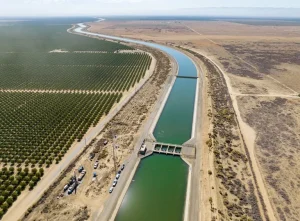 By Maven’s Notebook
By Maven’s Notebook
By Lois Henry, SJV Water
A groundwater agency on the western fringes of Kern County has taken the unprecedented step of banning all pumping from wells along the California Aqueduct for a 30-mile stretch.
The move is mainly designed to protect the vital artery that moves hundreds of millions of gallons of water a day from northern to southern California and is threatened by sinking land that could crimp its ability to function.
The ban is also intended to prove whether groundwater pumping is the true culprit. (more)
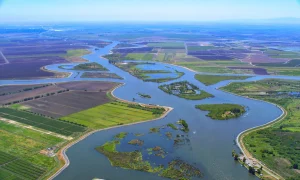 From Maven’s Notebook
From Maven’s Notebook
The Delta Science Program is currently working on the third iteration of the Delta Science Plan. Recommended within the Delta Plan, the Delta Science Plan is developed collaboratively with the Delta science community. Its purpose is to provide a clear vision, guiding principles, and effective approaches for coordinating Delta science efforts, as well as communicating the outcomes of scientific activities and their management implications to decision-makers. (more)
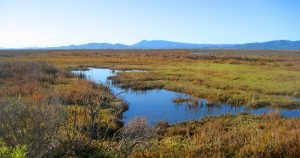 By Maven’s Notebook
By Maven’s Notebook
By Robin Meadows
The San Pablo Bay National Wildlife Refuge, which hugs the northern arc of the San Francisco Bay, was established half a century ago to conserve water birds. Now the refuge has an additional vital role: bolstering the region against climate change. The San Francisco Bay is the most urbanized estuary nationwide with 7.5 million people, and rising seas threaten to inundate much of the tidal marsh that absorbs floodwaters and buffers the shoreline from storm surges. (more)
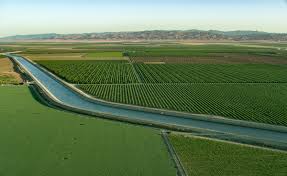 From the Maven’s Notebook
From the Maven’s Notebook
By Jesse Vad, SJV Water
New research from scientists at Stanford University shows that the San Joaquin Valley is sinking faster than ever due to excessive groundwater pumping. Even though aquifers are plummeting and the ground is sinking, the situation is never static. Since the historic wet year of 2023, some localities have seen significant rebounds in groundwater levels, though not enough to permanently change the trajectory, experts warn. Researchers brought together separate existing subsidence datasets from 2006 to 2022 to paint a more reliable picture of conditions in the valley. (more)
 Board staff, Zachary Ramsey and Joshua Kaup, were activated by the Department of Water Resources’ (DWR) Department Operations Center on January 28, 2025 to help provide watershed protection measures after the devastating Palisades and Eaton fires in the Los Angeles region. They assessed sites and directed teams of California Conservation Corps workers installing Best Management Practices to prevent contaminants in surface water from reaching local waterways. Together, their efforts helped protect watersheds surrounding 13,745 parcels from post-fire contaminant runoff. This was a monumental undertaking, and their work was a big part of its success. This was a joint collaborative effort executed by DWR, the Central Valley Flood Protection Board, and Caltrans.
Board staff, Zachary Ramsey and Joshua Kaup, were activated by the Department of Water Resources’ (DWR) Department Operations Center on January 28, 2025 to help provide watershed protection measures after the devastating Palisades and Eaton fires in the Los Angeles region. They assessed sites and directed teams of California Conservation Corps workers installing Best Management Practices to prevent contaminants in surface water from reaching local waterways. Together, their efforts helped protect watersheds surrounding 13,745 parcels from post-fire contaminant runoff. This was a monumental undertaking, and their work was a big part of its success. This was a joint collaborative effort executed by DWR, the Central Valley Flood Protection Board, and Caltrans.

 From Maven’s Notebook,
From Maven’s Notebook,
 From Comstock’s Magazine,
From Comstock’s Magazine,
 From Maven’s Notebook,
From Maven’s Notebook, By Maven’s Notebook
By Maven’s Notebook From Maven’s Notebook
From Maven’s Notebook By Maven’s Notebook
By Maven’s Notebook From the Maven’s Notebook
From the Maven’s Notebook